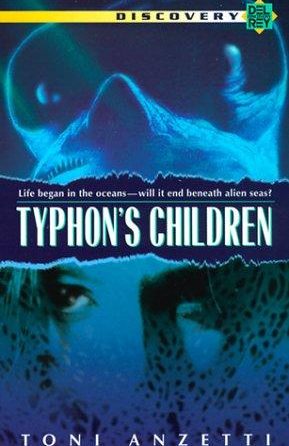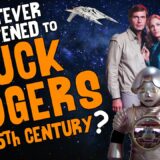In an article I’d written on my blog The Alien Next Door (“Fertility — Infertility & the Environment”) I got into a rather lively discussion with a fellow blogger (Erik) about the tendency in Western Culture mythos (in literature and in movies, particularly) to portray the main character in fiction as Christ figure and the ramifications of this choice. Erik lamented the separation that has occurred between “Jesus the Teacher” and “Christ the Redeemer”. I hadn’t really given this much thought until he brought it up. But his examples (e.g., Matrix and Harry Potter) and his discourse were so compelling, I had to ponder. So, here are my ponderings.
Today’s Christ-like hero suffers for the sins of the world and prepares himself (often struggling with this considerably) to deliver salvation, usually through fighting or violent confrontation and often with an incredible arsenal of weapons. I was swiftly brought to mind of the many action shoot-em up films whose tortured hero redeems him(her)self through some selfless, though violent action (e.g., Omega Man, V for Vendetta, Ultra Violet, Aeon Flux — all sci-fi movies, by the way, and ones I enjoyed immensely. And what about all those superhero movies, like Spiderman, X-Men, Green Lantern, etc. These films represent one version of Joseph Campbell’s “Hero’s Journey”, where the original hero leaves his ‘ordinary world’ wherein he/she has some major flaw to overcome (like apathy, greed, distrust, anger, fear of strawberries…etc.) to answer ‘the call’ to be the hero he/she was destined to become. This is a very familiar trope. Erik suggested that Western culture’s “concept of Redemption has invariably separated from the Grace that created it.” Jesus the Teacher had somehow fallen to the wayside to make room for Christ the Redeemer. According to Erik: “Jesus the Teacher said to ‘turn the other cheek’, but today’s Redeemers kick ass. Jesus the Teacher told us that what is done in love is blessed, but today’s Redeemers have more personal and interior motivations.” The two have simply become two different people, says Erik and “the latter is a superstar” compared to the former.” He ends his post with these compelling thoughts:
“The Beatitudes have become rather old fashioned, it seems, as has the idea of Grace. That is what seems to be the problem with today’s Redeemers: theirs is a personal battle with evil, and not a social one. ‘Love thy neighbor as thyself’ is an alien concept in a world that is perfectly self centered. All that’s left to do is kick ass on those who disagr — er, behave in an evil way, yeah, that’s it! If popular fiction really is a mirror being held up against us, the image we see is not a pretty one. The heritage of Western Culture has turned into a strange kind of cartoon — exaggerated, repetitious, vain, slapstick, and ultimately too silly watch. For some reason, very few people seem to understand this. They are too busy fixing their own hair in the mirror.”
If you still don’t get what Erik and I are talking about, go watch the poignant film Pay It Forward and then contrast its main character with the one in Ultra Violet or The Matrix.
The definition for grace occupies almost half a page in the dictionary. When I think of grace I think of selfless compassion, humility, gentleness, kindness, mercy and forgiveness and both inner and outer beauty. So, why does grace languish in the shadows of redemption? Why do we watch — and more importantly, totally enjoy — these latter movies at the expense of the former? Why do we long for a strong but flawed hero with personal issues as our icon? One who is often tough, independent, and ‘kicks ass’ at the expense of gentleness, humility, cooperation and selflessness? If, as Erik suggests, we are seeking heroes who reflect our own self-image or at least the traits we strive to have, then what does popular fiction say about our choices in life? Is Erik right about this dichotomy? I’d say definitely yes…but also no…
While I agree with Erik on the apparent separation of Christ figure in today’s popular fiction, perhaps there is another way to look at these tales that resolves this apparent dichotomy to some degree. My suggestion is to view them more as allegories with traits and values represented in several characters woven together in a complete and whole tapestry. To do so is to include the secondary character as being equally important. Let’s take Matrix, for instance. In fact, Neo isn’t the only Jesus-figure. His two female opposites (Trinity/Oracle) demonstrate Christ-like traits that embody grace, mercy, love (the holy spirit) and wisdom. Okay, so Trinity kicks major ass too; but her character also provides the chief motivation for our main ‘kick-ass’ hero through her selfless love and humility.
I assert that these two aspects of Christ (merciful teacher and redeemer) are indeed both represented (albeit in separate individuals) in films today: two individuals, one Christ the redeemer and the other Jesus the savior, often joined through a bond of selfless love; two halves of a whole.
The Gnostics have a word for this divine male/female pair: they call them syzygies, aeons (beings of light and emanations of God) that exist as complimentary pairs or twins. The aeon pair of Caen (which represents power, the redeemer) and Akhana (truth, love and grace, the teacher) are complimentary and inseparable. The yin/yang of a whole. The paradoxical oxymoron of order in chaos.
In Gnostic belief, aeons are emanations of God. According to one version, an aeon named Sophia (wisdom) emanated without her partner aeon, creating a Demiurge (responsible for the creation of the physical universe; Ialdaboth in Gnostic texts) which was not part of the Pleroma (fullness and the region of light) and apart from the divine totality [a metaphor possibly for humanity]). God then emanated two savior aeons, Christ and the Holy Spirit to save humanity from the Demiurge. Christ then took the form of the human, Jesus, in order to teach humanity how to achieve Gnosis (and know God).
So, for every Neo there is a Trinity/Oracle; for Violet there is Six; for Aeon Flux there is Trevor Goodchild; for Harry there is Dumbledore, and so on. In this way, the two complimentary aspects of Christ are reconciled. And in cases where such complimentary pairing is achieved (e.g., Neo would not have succeeded without both Trinity and the Oracle) we are taught that selfless cooperation is the highest form of heroism.









